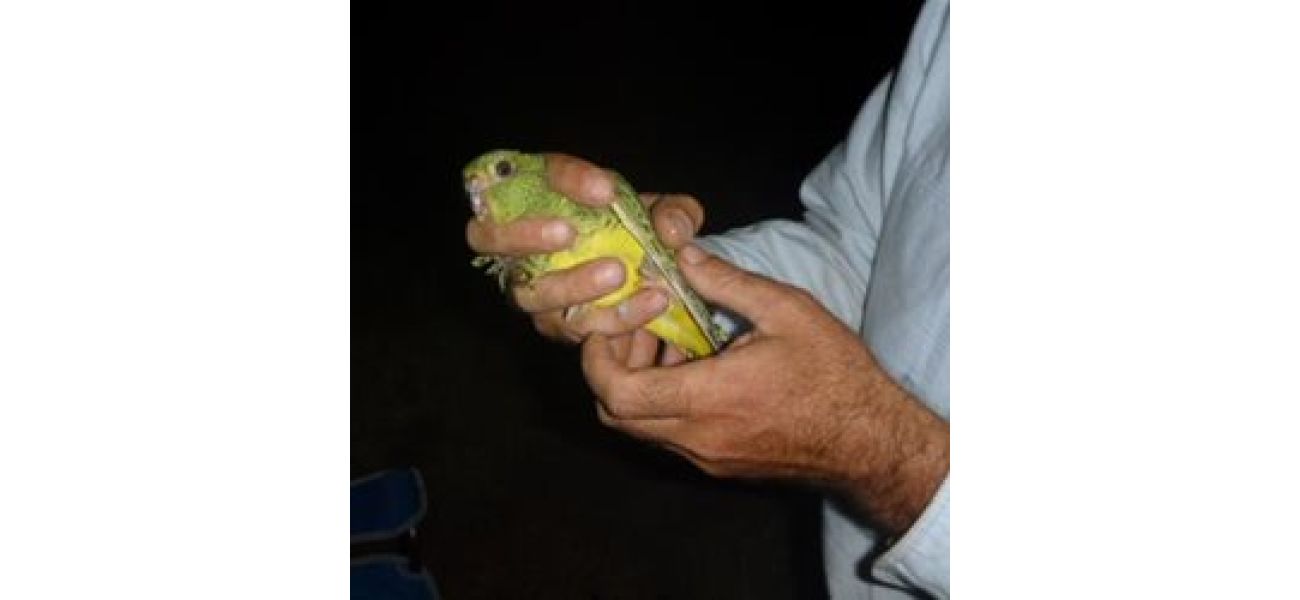The discovery of a dead bird and a lone feather has led to the finding of a larger group of birds.
Australia's search for a rare bird has a shocking turn as a large population is found in remote Pilbara, WA.
September 23rd 2024.

The discovery of a bird carcass in Queensland in 1990, a single feather found in a wedge-tailed eagle's nest in South Australia in 2017, and a rare capture in western Queensland in 2016 - these were the scarce clues to the existence of Australia's most elusive bird. The night parrot, once abundant in the old growth spinifex of inland Australia, was believed to be extinct for almost a century after its last sighting in 1912.
But over the last two decades, new evidence of the bird's continued existence has sparked a frenzy among birdwatchers and prompted urgent measures to protect its dwindling habitat. Known as the "Thylacine of the air", only a few dozen of these birds are thought to remain in Queensland, with occasional sightings in Western Australia up until 2020.
However, a recent discovery in Western Australia's remote Pilbara region has given new hope for the critically endangered species. A team of researchers from the National Environmental Science Program's Resilient Landscapes Hub and the University of Queensland, in partnership with local Indigenous rangers, set out to search for evidence of the elusive bird in the Ngururrpa Indigenous Protected Area.
Their efforts were met with success as they discovered the largest known group of night parrots spanning an area 160km north to south and 90km east to west. Using specialized audio recorders called songmeters, they were able to detect the distinct calls of the nocturnal bird at 17 different locations. This led the research team to estimate that there may be at least 50 of these birds inhabiting the 17 sites, surpassing the total number of known night parrots in Australia.
In an article published today in CSIRO Publishing, the study authors shared their findings and the significance of their discovery. They noted that before the detection of the night parrot calls in the Ngururrpa IPA in 2020, there was very little knowledge of the bird's presence in the area. The local Indigenous community shared memories of hearing the bird's whistle as children, often believing it to be an evil spirit.
To further understand the population and threats to the birds, the researchers set up camera traps and collected predator scats for dietary analysis. Dingoes, a natural predator, were frequently observed at the roosting sites of the night parrots, providing some protection against the feral cats which pose a significant threat to the species.
Unfortunately, like many other bird species around the world, the night parrot is also facing a decline in population. Invasive species have long been a major threat, but now the impact of climate change has surpassed it as the leading danger to Australia's birdlife. The night parrot, in particular, is vulnerable to the increasing frequency and intensity of bushfires. The Ngururrpa IPA, where the new population was discovered, typically experiences bushfires every six to 10 years, which can be devastating to the old growth spinifex vital to the bird's survival.
In light of these findings, the study authors recommend the establishment of a long-term monitoring program in the Ngururrpa Country to better understand the night parrots and their population trends. This will be crucial in determining the effectiveness of conservation efforts and ensuring the survival of this remarkable and elusive bird.
But over the last two decades, new evidence of the bird's continued existence has sparked a frenzy among birdwatchers and prompted urgent measures to protect its dwindling habitat. Known as the "Thylacine of the air", only a few dozen of these birds are thought to remain in Queensland, with occasional sightings in Western Australia up until 2020.
However, a recent discovery in Western Australia's remote Pilbara region has given new hope for the critically endangered species. A team of researchers from the National Environmental Science Program's Resilient Landscapes Hub and the University of Queensland, in partnership with local Indigenous rangers, set out to search for evidence of the elusive bird in the Ngururrpa Indigenous Protected Area.
Their efforts were met with success as they discovered the largest known group of night parrots spanning an area 160km north to south and 90km east to west. Using specialized audio recorders called songmeters, they were able to detect the distinct calls of the nocturnal bird at 17 different locations. This led the research team to estimate that there may be at least 50 of these birds inhabiting the 17 sites, surpassing the total number of known night parrots in Australia.
In an article published today in CSIRO Publishing, the study authors shared their findings and the significance of their discovery. They noted that before the detection of the night parrot calls in the Ngururrpa IPA in 2020, there was very little knowledge of the bird's presence in the area. The local Indigenous community shared memories of hearing the bird's whistle as children, often believing it to be an evil spirit.
To further understand the population and threats to the birds, the researchers set up camera traps and collected predator scats for dietary analysis. Dingoes, a natural predator, were frequently observed at the roosting sites of the night parrots, providing some protection against the feral cats which pose a significant threat to the species.
Unfortunately, like many other bird species around the world, the night parrot is also facing a decline in population. Invasive species have long been a major threat, but now the impact of climate change has surpassed it as the leading danger to Australia's birdlife. The night parrot, in particular, is vulnerable to the increasing frequency and intensity of bushfires. The Ngururrpa IPA, where the new population was discovered, typically experiences bushfires every six to 10 years, which can be devastating to the old growth spinifex vital to the bird's survival.
In light of these findings, the study authors recommend the establishment of a long-term monitoring program in the Ngururrpa Country to better understand the night parrots and their population trends. This will be crucial in determining the effectiveness of conservation efforts and ensuring the survival of this remarkable and elusive bird.
[This article has been trending online recently and has been generated with AI. Your feed is customized.]
[Generative AI is experimental.]
0
0
Submit Comment





